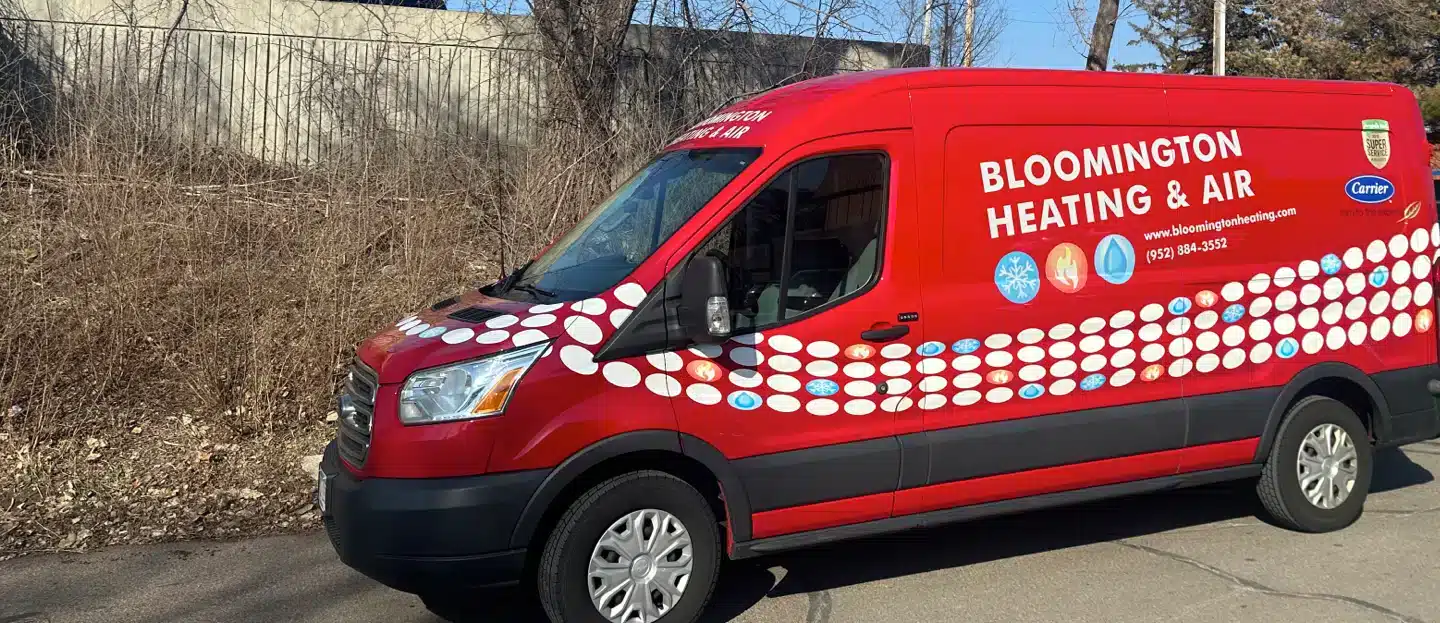
24/7 Emergency Phone Line
Family Owned & Operated
Licensed, Bonded & Insured
The AC services that your home needs often depend on its location. In Minnesota, for example, the mixture of summer heat, humidity, and dust makes indoor mold growth one of the central concerns for central air systems. Mold doesn’t just make air conditioners run less efficiently, the unwanted fungus also lowers indoor air quality and could even put your family’s respiratory health at risk. Professional duct cleaning services and central-air dehumidifiers can help to eliminate mold growth, but first, you need to know whether your AC has mold. Here are several telltale signs of an indoor mold problem.
You Find Visible Signs Of Mold Growth
Mold develops from spores in the air. When spores find moisture, nutrients, and temperate conditions all in one place, they quickly turn into a mold infestation.
There are many types of mold, each with distinct color profiles, textures, and levels of toxicity. The mold that grows in your AC unit will be the same mold that’s found elsewhere in your home and the environment outside. Here are the common molds that affect Minnesota HVAC systems.
Aspergillus
This is a common indoor mold with relatively high toxicity. Breathing in large amounts of Aspergillus can lead to allergic reactions from an inflammatory lung disorder called hypersensitivity pneumonitis. Visually, Aspergillus has a flat, fuzzy texture and ranges in color from grayish green to brownish black.
Aureobasidium
This mold grows mostly on exposed wood, wallpaper, and painted walls. Although Aureobasidium won’t grow profusely on the plastic, rubber, and metal components of an HVAC system, the spores can still be recycled through the air conditioner and spread throughout your home. Colorwise, this fungus is normally pink or black.

Fusarium
Because Fusarium can spread at low temperatures, it’s a threat to be growing even when the AC is running. This mold can also grow on many surfaces, but it loves fabrics, such as drapes and upholstery. Its toxicity is also high enough to create asthma and respiratory infections. In terms of appearance, Fusarium ranges from pale brown to purplish pink.
Chaetomium
Chaetomium flourishes on drywall. For that reason, it is commonly found in unfinished basements and closets, which, coincidentally, are the places where HVAC units are often installed. The proximity of Chaemotomium to the HVAC system increases the risks of the mold being sucked into the air conditioner and distributed to other parts of the home. In high amounts, Chaemotomium can eat through drywall and cause severe home damage. Its color is usually light brown with a bumpy texture.
Serpula Lacrymans
It doesn’t take excessively high indoor humidity for Serpula lacrymans to thrive. Only a little moisture will have this yellow mold growing in all types of places, from wood floors to furniture, as well as inside your air conditioner. You can identify it by its yellow appearance. But wear a mask when cleaning the mold away, as it’s toxic enough to cause allergic reactions.
If you see any of these molds in your home, don a mask and clean away as much as you can with a non-toxic mold cleaner. Then call our HVAC company in Bloomington to schedule an HVAC inspection. If you can spot mold elsewhere in your home, it’s also probably made its way into the air conditioner and ductwork.
The Air Smells Stale
One word describes how most mold smells, and that word is “unpleasant.” It’s not uncommon for houses to have distinct scents, of course. Antique homes, in particular, might have slightly musty or earthy odors. But if you’re smelling awkward scents in a newer home, after cleaning the house, or (and this is a dead giveaway) when you turn on the air conditioner, there’s a pretty solid chance that what you’re smelling is mold in the air ducts.
Not all molds smell, however. And of those that do smell, not all of them are health hazards. But still, if your objective is to get relief from the summer heat with crisp, clean AC, the last thing you want is for that air to smell like mothballs. To clear out the mold from the system, schedule an HVAC maintenance appointment.
Your Allergy Symptoms Won’t Go Away
According to the Centers for Disease Control and Prevention (CDC), mold exposure can lead to a variety of deleterious health effects, or none at all. But if you are feeling under the weather, particularly if you have allergy symptoms you can’t shake, the cause might not be lingering springtime pollen but rather moldy air flowing through your air conditioner. Symptoms vary based on the types of mold that you’re exposed to, but in general, you might experience wheezing, watery eyes, coughing, and rashes.
Because there are no government standards for healthy indoor mold levels, be vigilant about observing your health and whether it’s being affected by a mold infestation. The easiest solution is to eliminate and prevent mold growth altogether through regular HVAC maintenance. Contact us today to schedule AC service in Bloomington, MN!
